Share this article
Illustrated by Marina Vaptzarova, this is the story of her encounter with this peculiar material and it’s amazing properties.
Daphne paper (or Lokta in nepalese) finds its source in one of the most natural and sustainable plant fibers. For over a millenium, it has been produced according to Himalayan tradition, using the Daphne shrub which only grows in the foothills of the Himalayas. Naturally regenerating due to its very harvest, the Daphne shrub reaches full maturity in only six years. Long and naturally self-adhesive, Daphne fibers create a strong, durable and natural paper that has earned an essential place in Nepalese society for centuries, in prayer books, official documents and traditional medicine.
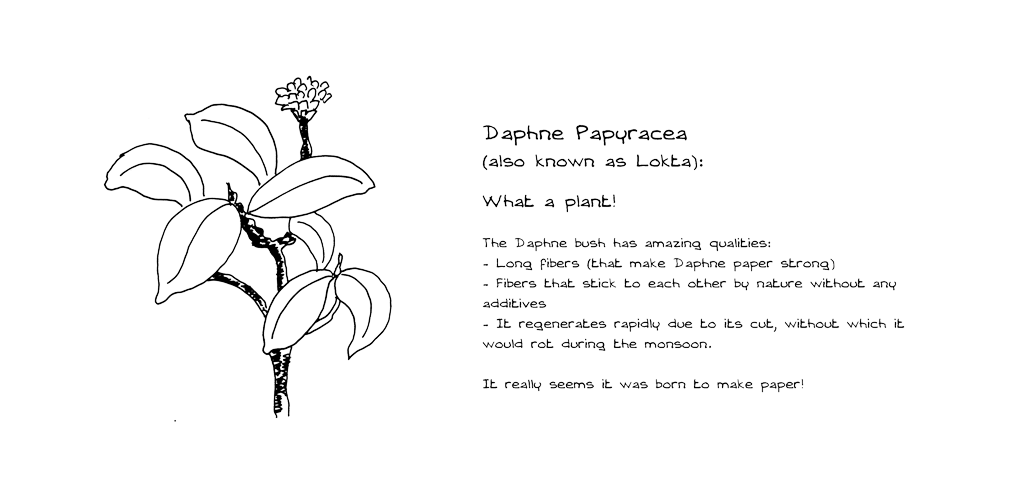
The Daphne bush has amazing qualities:
• Its long fibers that make Daphne paper strong
• These fibers stick to each other naturally without any additives
• And it regenerates rapidly due to its cut, without which it would rot during the monsoon.
This plant does seem like it was born to make paper!
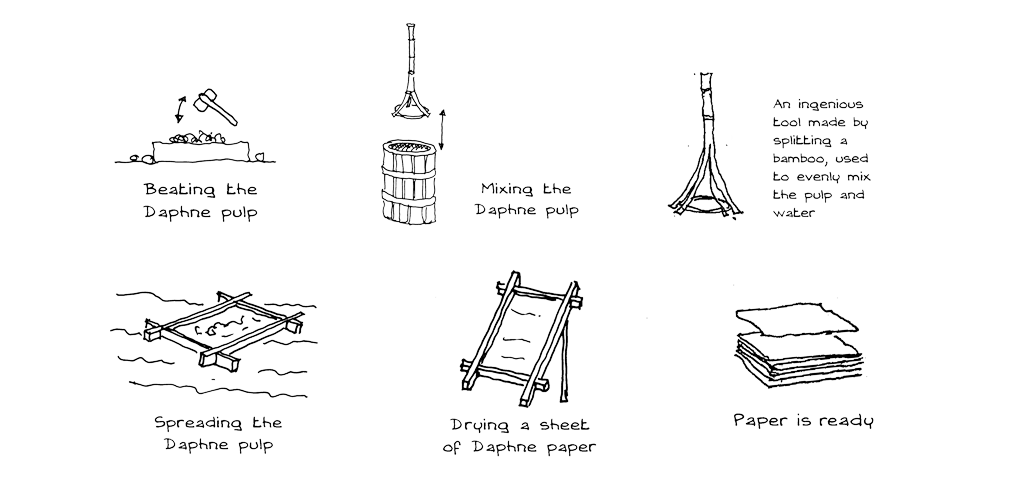
Once the daphne fibers have been cooked, they are softened through beating, then mixed with water. The Daphne pulp is then spread on a sieve fixed on a wooden frame that floats. The frame is then moved around allowing the fibers to be spread on the sieve in a regular fashion. It is then lifted out of the water and set upright toward the sun. When the pulp is dry, it is delicately removed from the sieve as a sheet of paper.
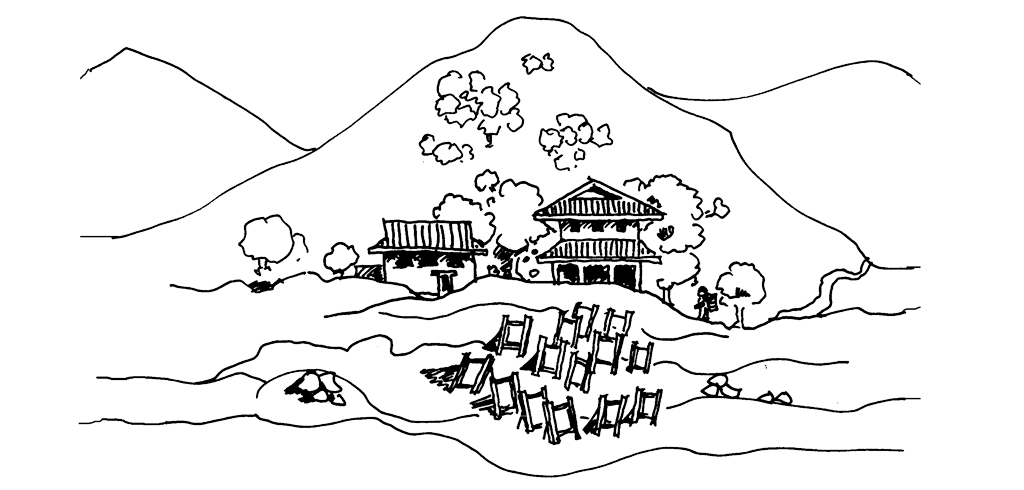
A nepalese village with Daphne paper drying in wooden frames on its terraced slopes.
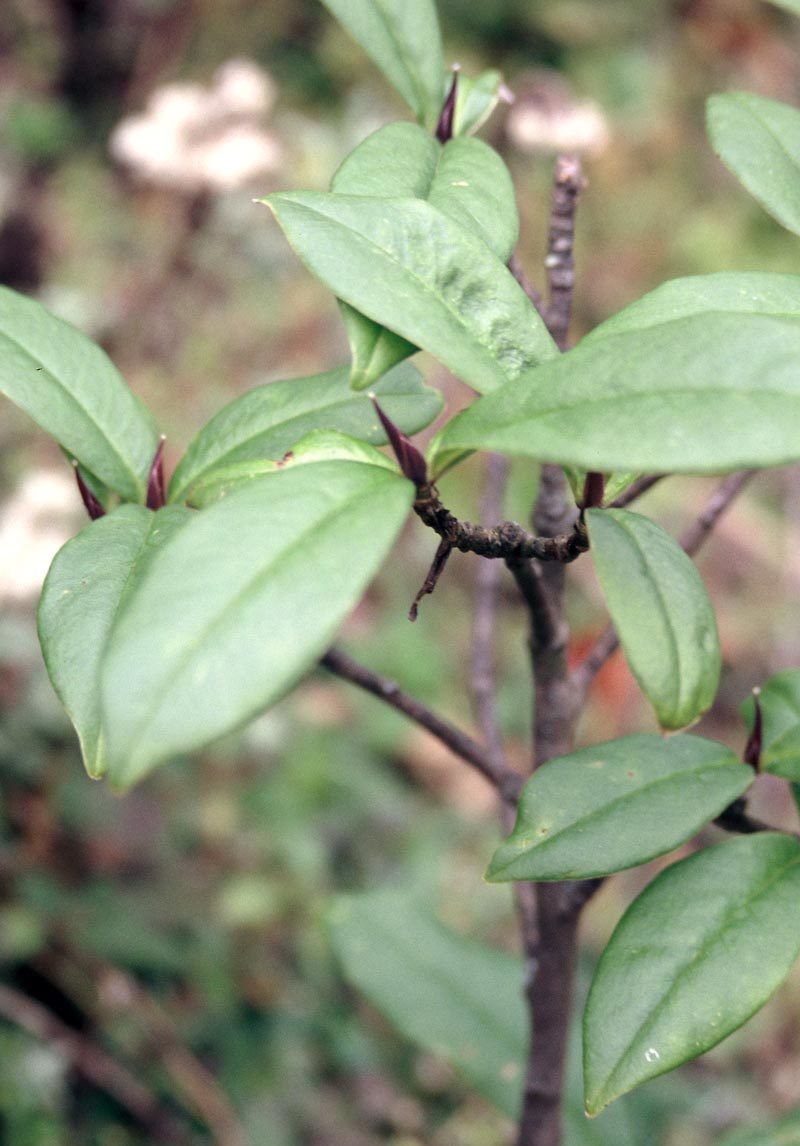

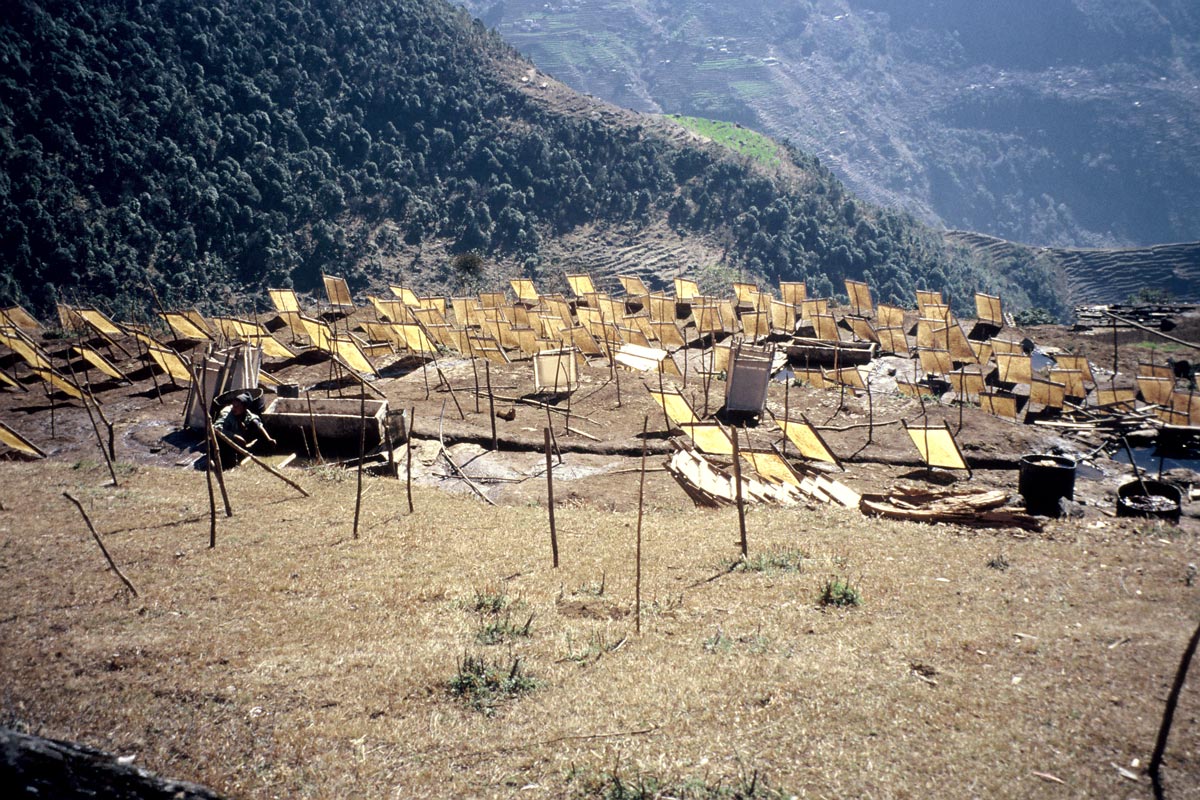

Wondering why I was so interested in his paper making tradition, this villager asked me:
“You do not make paper in your country?”
I explained that in Europe the pulp is squeezed in-between two sheets of felt to rince it of its water.
“Why so much hassle? Is there no sun in your country?” he asked surprised.
In fact, Nepal’s sunlight is enough to rapidly and efficiently dry the pulp into sheets of paper.
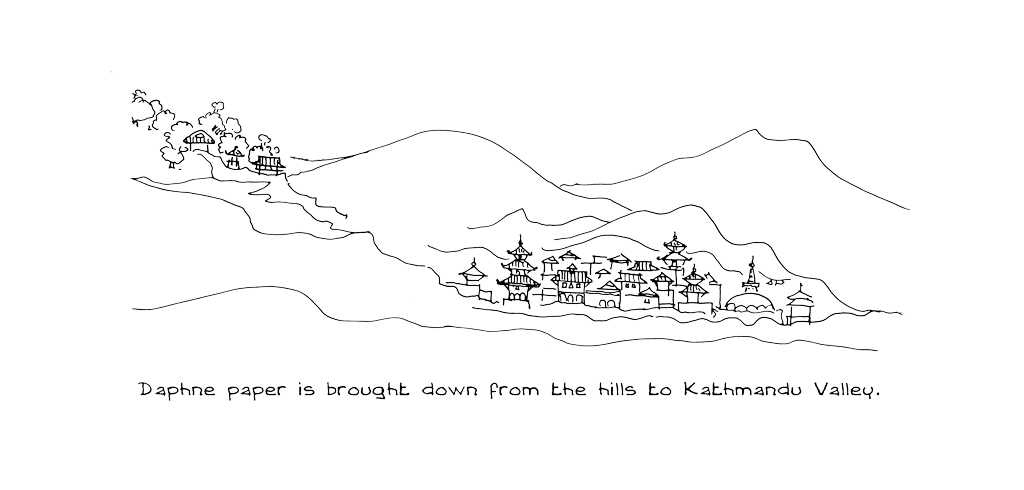
Daphne paper is brought down from the mountains and hills to the Kathmandu valley. The Daphne bark is collected in the mountains, mostly during the autumn season. The bush grows between 2000 and 3000 m altitude.

The street where Daphne paper is traditionally sold.
In Kathmandu, near a stupa called “Kathe Simbhu”, between Bangemudha and Thahity is a market where Lokta paper and ghee (clarified butter) are traditionally sold in the same shops.

For centuries, Daphne paper has been used in tibetan prayer books for of its strength and longevity. Another fascinating story to read about here : The Paper Pilgrimage
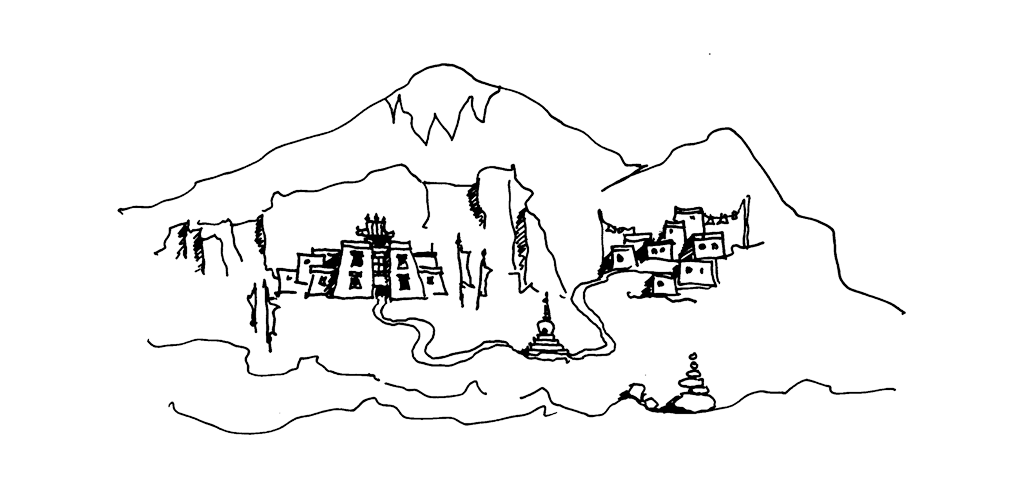
Share this article
